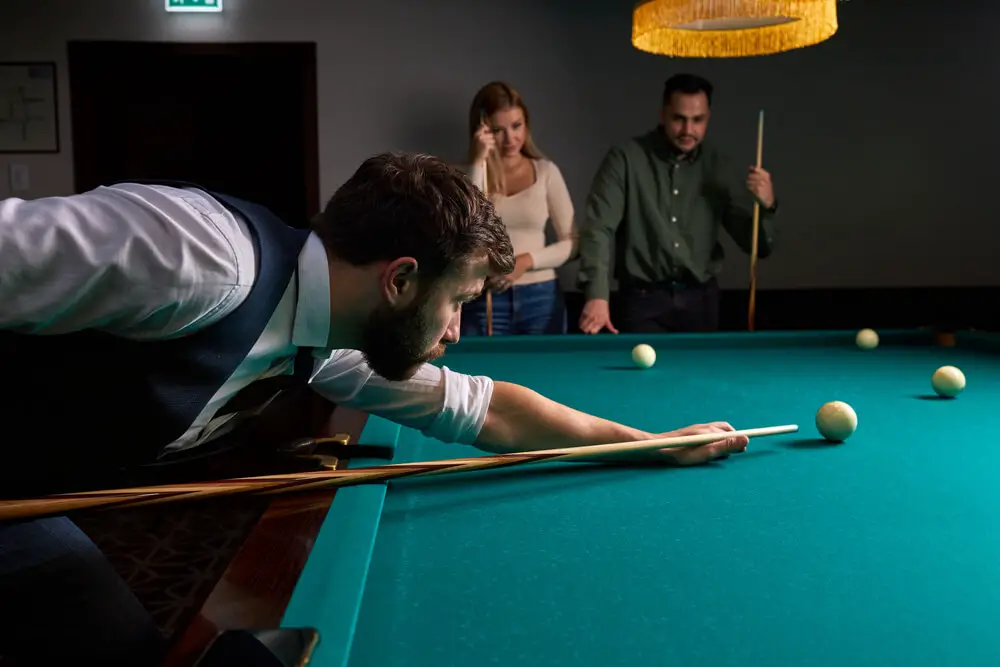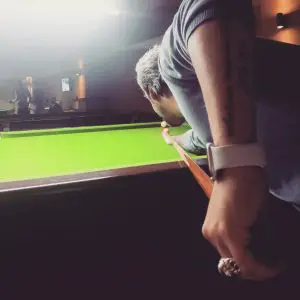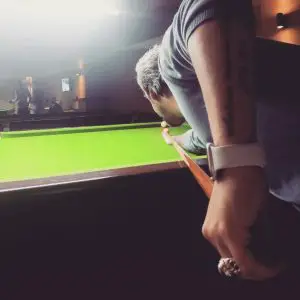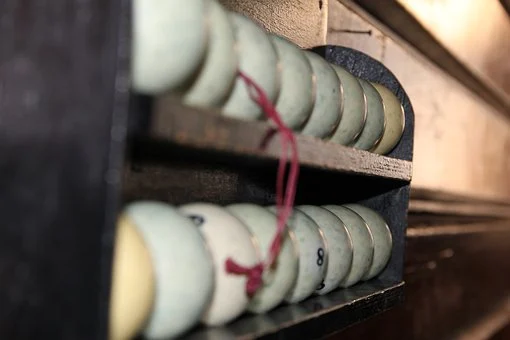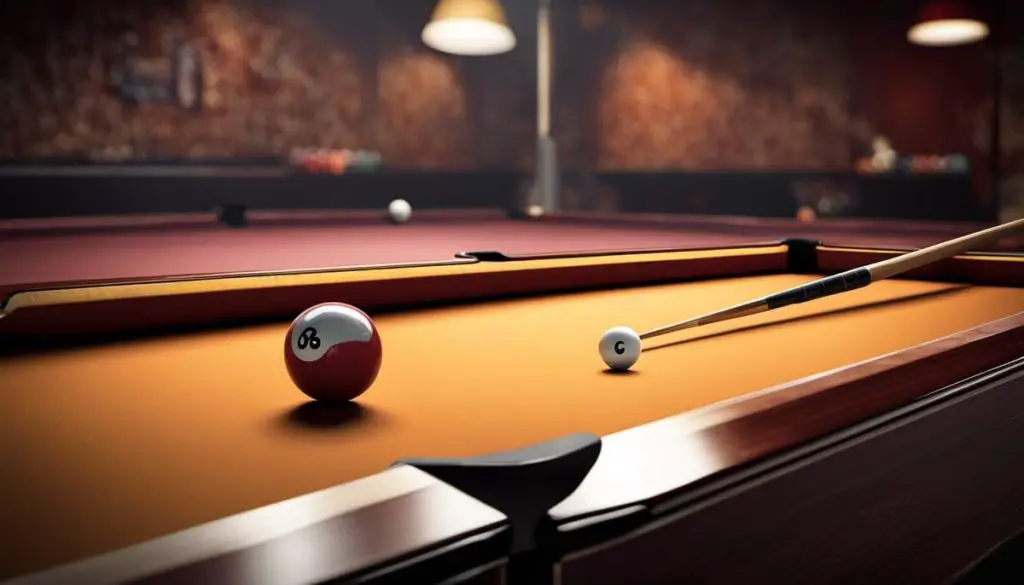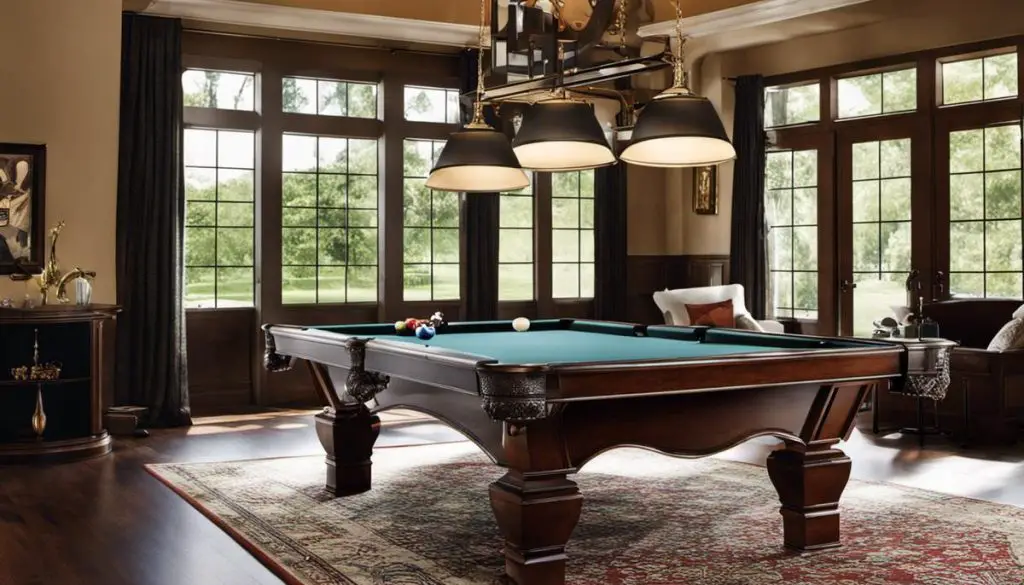You someday aspire to play pool at the same level as Efren Reyes, Thorsten Hohmann, or Shane Van Boening. You know this will take time, but you figure having a pool cue on par with what the pros use is a good start. What pool cue weight do professional players prefer?
Professional pool players use pool cues weighing 19 to 19.5 ounces. This is considered the average pool cue weight, with the typical range between 18 and 21 ounces with half-ounce increments often available.
Today’s post is all about pool cue weight. Ahead, we’ll talk more about the cues the pros use, what it feels like playing with a 19-ounce cue versus a heavier one, and how to create the right pool cue weight balance. You won’t want to miss it!
What Pool Cue Weight Do Professional Pool Players Prefer?
We mentioned in the intro that, among professional pool players, the average pool cue weight is 19 ounces. Let’s go into more detail now, looking at the pool cues that professional players favor as well as the weight of each cue.
Efren Reyes
One of the biggest superstars in pool is Efren Reyes, who has won more than 70 international titles and several world championships. Those include the Derby City Classic Championship (14-time winner), the US Open Ball 9 Championship (three-time winner), the World Pool Association World Nine-Ball Championship, and the World Eight-Ball Championship (four-time winner).
Reyes plays with a Mezz wrap-free cue made of bird’s eye maple that’s 58 inches and 19 ounces.
Thorsten Hohmann
“The Hitman” Thorsten Hohmann from Germany has taken home the World Straight Championship, the WPA World Nine-Ball Championship, and various other world championships. He uses a Lucasi hybrid cue called the LHT88, which was made for him. That cue is available in weights of 18 to 21 ounces.
Shane Van Boening
The South Dakota superstar Shane Van Boening has won the Master of the Table Championship (twice), One Pocket Division Championship (once), and the 9-Pocket Division Championship (four times) at the Derby City Classic. He’s also a three-time US Bar Table Championship winner and has won the U.S. Open Championship six times between 2007 and 2019.
Van Boening plays with the WCT Break Cue, which weighs 19 ounces.
Alex Pagulayan
“The Killer Pixie” Alex Pagulayan is a Canadian pool and snooker player who has won dozens of championships since 2002. Some of those include the 2006 Philippine National Championship, the 2012 Canadian 8-Ball Championship, the 2013 Derby City Classic 9-Ball Championship, and the 2017 U.S. Open 8-Ball Championship.
Pagulayan uses Mezz’s “The Lion” pool cue, which is 19 ounces.
Pool Cue Weight Guide – What You Need to Know
Okay, so it’s clear that the pros prefer a pool cue that’s about 19 ounces, but why is that? While we’ve talked about pool cue weight on this blog before, let’s take this section to go into a lot more detail about what playing with a lightweight 18-ounce or 19-ounce cue feels like versus using a heavier 20-ounce cue.
As a refresher, pool cues are available at weights between 18 and 21 ounces as well as half-ounce increments such as 18.5 ounces or 20.5 ounces. Some cues are heavier than 21 ounces, up to 27 ounces, and you can also buy pool cues that are 15 ounces. Considering these cues aren’t the norm, we won’t talk about these outliers in this post.
Without further ado, let’s discuss the experience of playing with lighter-weight and heavier cues.
18-Ounce to 19-Ounce Pool Cues
These featherweight pool cues are designed for easy handling so you can make a range of shots and try various techniques. When you shoot with a pool cue of this weight, the cue has a great snap so the cue ball can travel around the billiards table with vivaciousness. However, once the cue ball hits the object ball, most of that momentum decreases.
This can cause the object ball to land into the pocket far more slowly than the rate at which you hit the cue ball. Why is that? It’s simple physics, really. Isaac Newton has several laws of motion that come into play when shooting pool.
One such law is that inertia will happen unless and until friction ceases. Inertia in physics is this principle according to Oxford Dictionary: “a property of matter by which it continues in its existing state of rest or uniform motion in a straight line, unless that state is changed by an external force.”
So inertia tells us that the cue ball will continue traveling across the billiards table until an external force stops it. In this case, the external force is the object ball.
20-Ounce Pool Cues
With a 20-ounce pool cue, you get a bit less snap than using a 19-ounce cue and considerably less snap than an 18-ounce cue. This lack of snap causes the opposite effect than what happens when playing with a lightweight cue.
When you strike the cue ball, it doesn’t move with great momentum. Once the cue ball collides with the object ball, that latter ball will reach its pocket far quicker than using a 19-ounce cue.
It’s for that reason that it’s often recommended that beginners start with a 20-ounce cue. You’ll see more balls get pocketed, which can increase your confidence in the game of pool. Once you feel like you have the basics down, you might want to try a 19-ounce cue. Your performance could be even better!
21-Ounce Pool Cues
Of the four common pool cue sizes, 21 ounces is the heaviest. These cues have the least amount of snap. Prepare for very slow cue balls but faster object balls. This too is another Newton law of motion. The action you’re doing–hitting the cue ball–causes an opposite reaction, or the pool ball going slow until it hits the object ball.
Half-Ounce Increments
What about if you play with a half-ounce incremented pool cue, such as one that’s 19.5 ounces? Do keep in mind that that extra half-ounce can influence your playstyle. At 19.5 ounces, your pool cue is closer in weight to a 20-ounce cue than an 18-ouncer. That means you should expect some snap, but not as much as you’d get if your cue was 19 ounces with no half-ounce increments.
That said, half-ounce increments can be good. If you’d like a lighter-weight pool cue but you don’t want the cue ball to fly out of control like it has every time you’ve used an 18-ounce cue, then try one that’s 18.5 ounces. The cue will have a bit less snap.
Pool Cue Weight Balance – Does It Impact Your Playing?
Besides the weight of the pool cue, the cue’s weight balance is also good to know. All pool cues have a center point in which they’re completely balanced. If you put the pool cue on one of your fingers, you should theoretically be able to support the cue with that one finger.
The pool cue balance point is equivalent to the center of gravity, which is–you guessed it–another physics concept. The center of gravity, also known as the center of a mass, is the point at which its weight is balanced from all sides.
The technique you use to play pool can influence the cue’s balance point. For example, let’s say you’re playing open bridge. To make an open bridge with your hand, put your index finger and thumb together while your palm is flat. Then, bring your other three fingers in. They should be somewhat elevated into a V shape.
To shoot with open bridge positioning and still stay within the pool cue’s balance point, that point would be before your grip hand. If your pool cue had a shaft that was heavier at the end of the tip, this would also cause the balance point to be nearer the end of the cue than towards the back.
If you want to balance your pool cue, then measure out from the butt plate 15-and-a-half to 20 inches. With your dominant hand on the cue, that arm’s elbow should be at an angle of 88 to 90 degrees. Your opposite hand should be 10 to 13 inches from the area where the pool cue is on the bridge hand.
If all this seems too complex for you, that’s okay. You can always go by feel to find a good pool cue weight balance if that’s what works for you. After all, the weight balance doesn’t have a huge impact on how well you’ll play. It’s more of a technical concept that you can always come back to later.
Conclusion
Many professional pool players use 19-ounce pool cues to get an awesome snap on the cue ball and a slower object ball that reaches its pocket with determination. You don’t have to play with a 19-ounce cue if you’d prefer not to, but do be aware that as pool cues get heavier, the object ball moves faster than the cue ball.
Weight is but one factor that should determine which pool cue you choose, but it’s one of the more important factors, we’d say. We hope this article helps you choose a pool cue like the pros!

